
The Artefact and Design Showcase is located in the _OME .
The this part of the event is On Site only.
The showcase is open parallel to the Symposium to explore the exhibition pieces with dedicated slots in the Symposium Schedule.
Exhibition Opening Times:
Day 1: Wednesday 12th October 2022, 16.30 - 19.00 Launch
Day 2: Thursday 13th October 2022, 15.45 - 17.30 Discussion Forum
The this part of the event is On Site only.
The showcase is open parallel to the Symposium to explore the exhibition pieces with dedicated slots in the Symposium Schedule.
Exhibition Opening Times:
Day 1: Wednesday 12th October 2022, 16.30 - 19.00 Launch
Day 2: Thursday 13th October 2022, 15.45 - 17.30 Discussion Forum
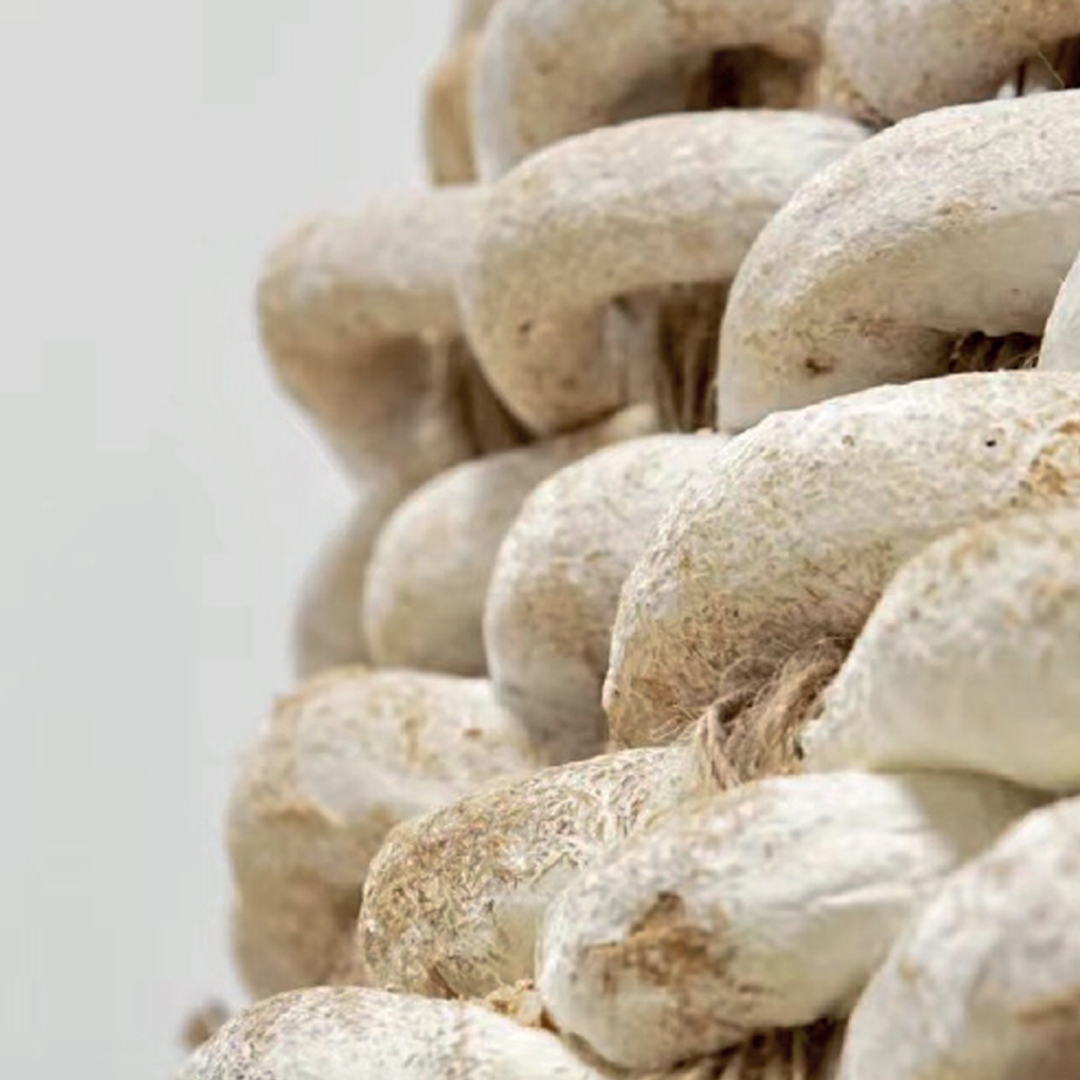
‘Thinking-by-doing ‘- speculations in textile-facilitated MBC construction methods
Eliza Biala
Stuttgart University
E-mail: eliza.biala@ibk2.uni-stuttgart.de
Eliza Biala, MSc. Arch. is research associate at the Institute of Building Construction, Building Technology and Design IBK2 at the University of Stuttgart. Her scientific interest scopes integrative design processes for a material change in architecture and biofabrication.
Stuttgart University
E-mail: eliza.biala@ibk2.uni-stuttgart.de
Eliza Biala, MSc. Arch. is research associate at the Institute of Building Construction, Building Technology and Design IBK2 at the University of Stuttgart. Her scientific interest scopes integrative design processes for a material change in architecture and biofabrication.

Bio Chroma hydrogel composite plasters: Substrate to induce bio coloration on algal growth, for architectural surface application
Mangesh Kurund
The Bartlett School of Architecture, UCL
E-mail: mangesh.kurund.20@alumni.ucl.uk
I am a multidisciplinary designer, with a Masters in Bio-Integrated Design from The Bartlett School of architecture, UCL. As a part of my academic research, I developed a novel hydrophilic carbon-negative substrate material for bio coloration on algal growth and architectural surface applications. I have a background in architecture and professional experience in earth-based architectural practices. I am currently developing new methods to fabricate biomaterials with algae and computationally exploring environmental data-driven design for the digital understanding of bio x architecture.
The Bartlett School of Architecture, UCL
E-mail: mangesh.kurund.20@alumni.ucl.uk
I am a multidisciplinary designer, with a Masters in Bio-Integrated Design from The Bartlett School of architecture, UCL. As a part of my academic research, I developed a novel hydrophilic carbon-negative substrate material for bio coloration on algal growth and architectural surface applications. I have a background in architecture and professional experience in earth-based architectural practices. I am currently developing new methods to fabricate biomaterials with algae and computationally exploring environmental data-driven design for the digital understanding of bio x architecture.
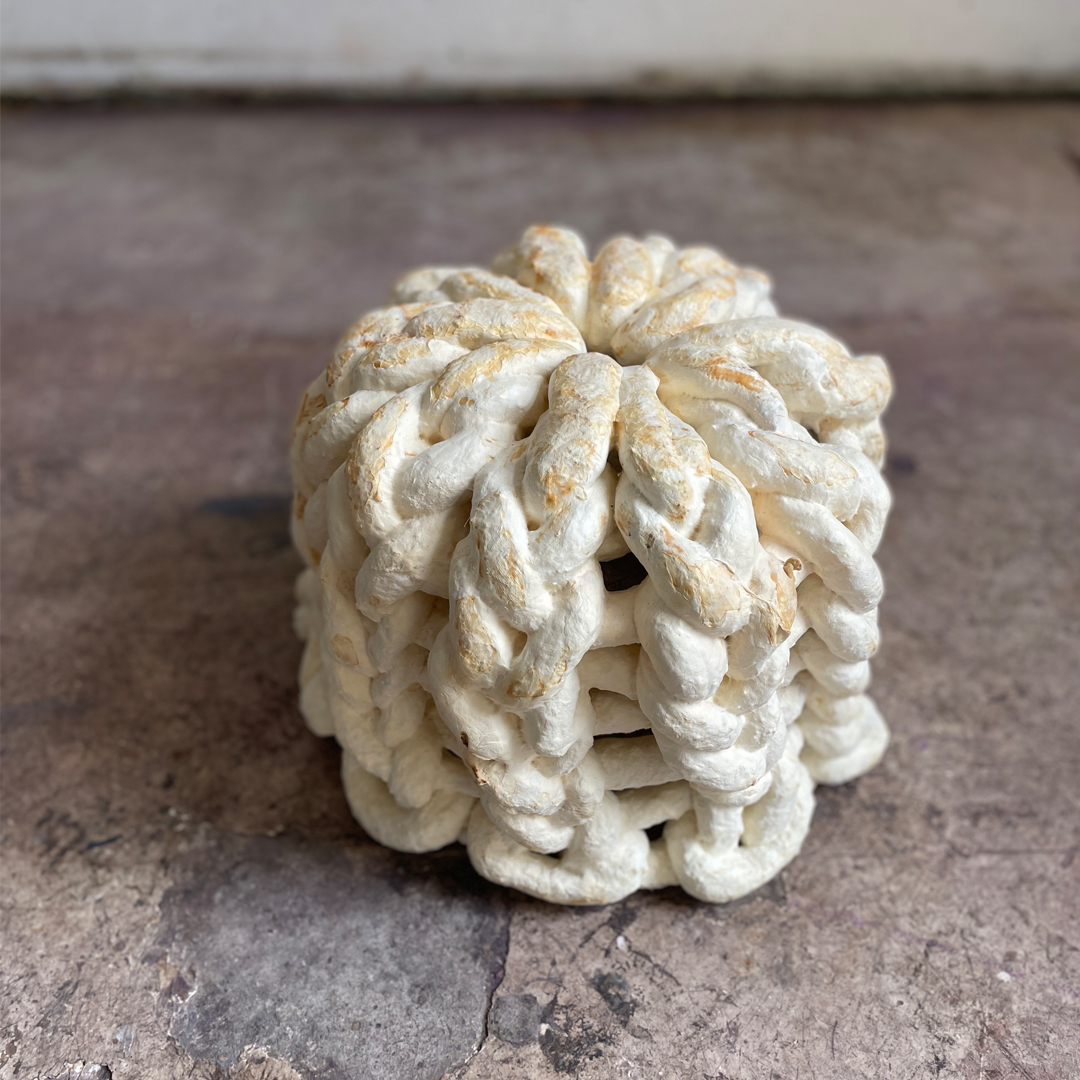
Knitted mycelium textile hybrid
Anne-Kathrin Kühner
Weißensee University Berlin
ak.kuehner@googlemail.com
Anne-Kathrin Kühner is a material and textile designer with a master’s degree at Weißensee Kunsthochschule Berlin, where she specialized in textile hybrids. Main focus of her work is the transformation of materials into textiles. She considers mostly solidifying materials, increasingly focusing on future-proof materials such as mycelium. She is interested in collaborative and interdisciplinary approaches.
Weißensee University Berlin
ak.kuehner@googlemail.com
Anne-Kathrin Kühner is a material and textile designer with a master’s degree at Weißensee Kunsthochschule Berlin, where she specialized in textile hybrids. Main focus of her work is the transformation of materials into textiles. She considers mostly solidifying materials, increasingly focusing on future-proof materials such as mycelium. She is interested in collaborative and interdisciplinary approaches.

MYCOllullose: Fabricating biohybrid material system with mycelium-based composites and bacterial cellulose - Natalia Beata Piórecka
Natalia Piorecka
The Bartlett School of Architecture, UCL
E-mail: nati.piorecka@gmail.com
Natalia Piórecka is a multidisciplinary designer looking at the opportunities in blurring the lines between nature and design. She holds a BA degree in Architecture from Newcastle University, UK and continues her study at the MArch Bio-Integrated Design at the Bartlett, UCL. Recently her work focuses on working with mycelium through the means of Experimental Architecture, embodying her passion for Biology and seeking solutions that promote collaboration with nature integrating scientific research and material study.
The Bartlett School of Architecture, UCL
E-mail: nati.piorecka@gmail.com
Natalia Piórecka is a multidisciplinary designer looking at the opportunities in blurring the lines between nature and design. She holds a BA degree in Architecture from Newcastle University, UK and continues her study at the MArch Bio-Integrated Design at the Bartlett, UCL. Recently her work focuses on working with mycelium through the means of Experimental Architecture, embodying her passion for Biology and seeking solutions that promote collaboration with nature integrating scientific research and material study.
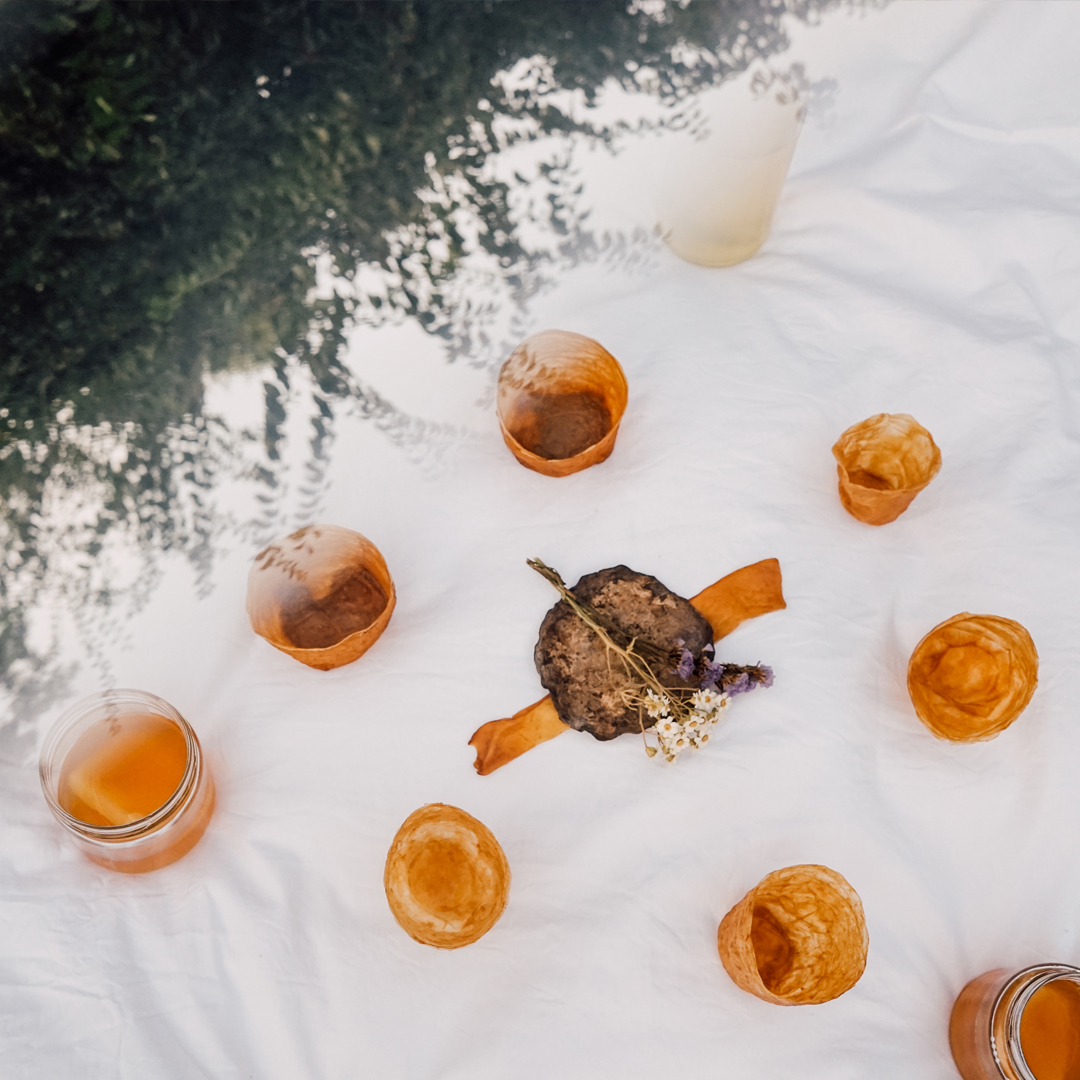
Material Rituals with the Other
Joanne Jones
joannejonesmail@gmail.com
Joanne Jones is a bio-inclusive, collaborative designer and researcher with a multidisciplinary approach to design research, industrial design, and interspecies collaboration. Embracing acts of care, ritual, and ceremony, her praxis embodies the acknowledgment that the nonhuman possesses agency beyond the human. Her ongoing research focuses on interspecies collaboration with bioassembled materials as a conduit for conscious creation with the other-than-human.
joannejonesmail@gmail.com
Joanne Jones is a bio-inclusive, collaborative designer and researcher with a multidisciplinary approach to design research, industrial design, and interspecies collaboration. Embracing acts of care, ritual, and ceremony, her praxis embodies the acknowledgment that the nonhuman possesses agency beyond the human. Her ongoing research focuses on interspecies collaboration with bioassembled materials as a conduit for conscious creation with the other-than-human.
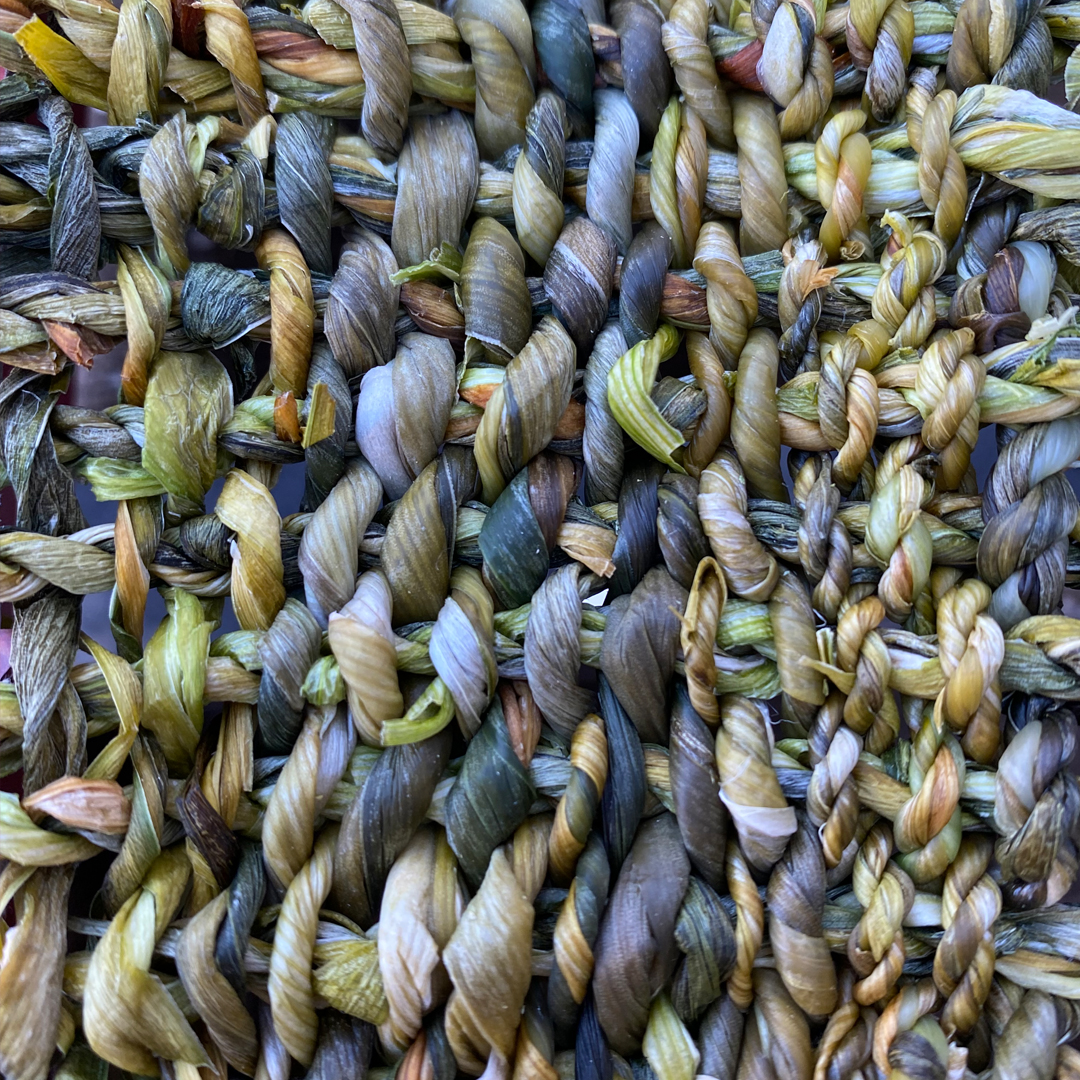
VonFabric
Iulianiya Grigoryeva
Newcastle University
I.Grigoryeva2@newcastle.ac.uk
Grigoryeva Iulianiya is March architecture at Newcastle university and artist with an interest in the circular environment for approaching the food waste, primary focusing on creating the new bio materials from food scraps, which are applicable in domestic environment. Her work has been supported by climate scholarship from Newcastle university and OME, and publicly presented as workshop with collaboration of Great North Museum.
Newcastle University
I.Grigoryeva2@newcastle.ac.uk
Grigoryeva Iulianiya is March architecture at Newcastle university and artist with an interest in the circular environment for approaching the food waste, primary focusing on creating the new bio materials from food scraps, which are applicable in domestic environment. Her work has been supported by climate scholarship from Newcastle university and OME, and publicly presented as workshop with collaboration of Great North Museum.
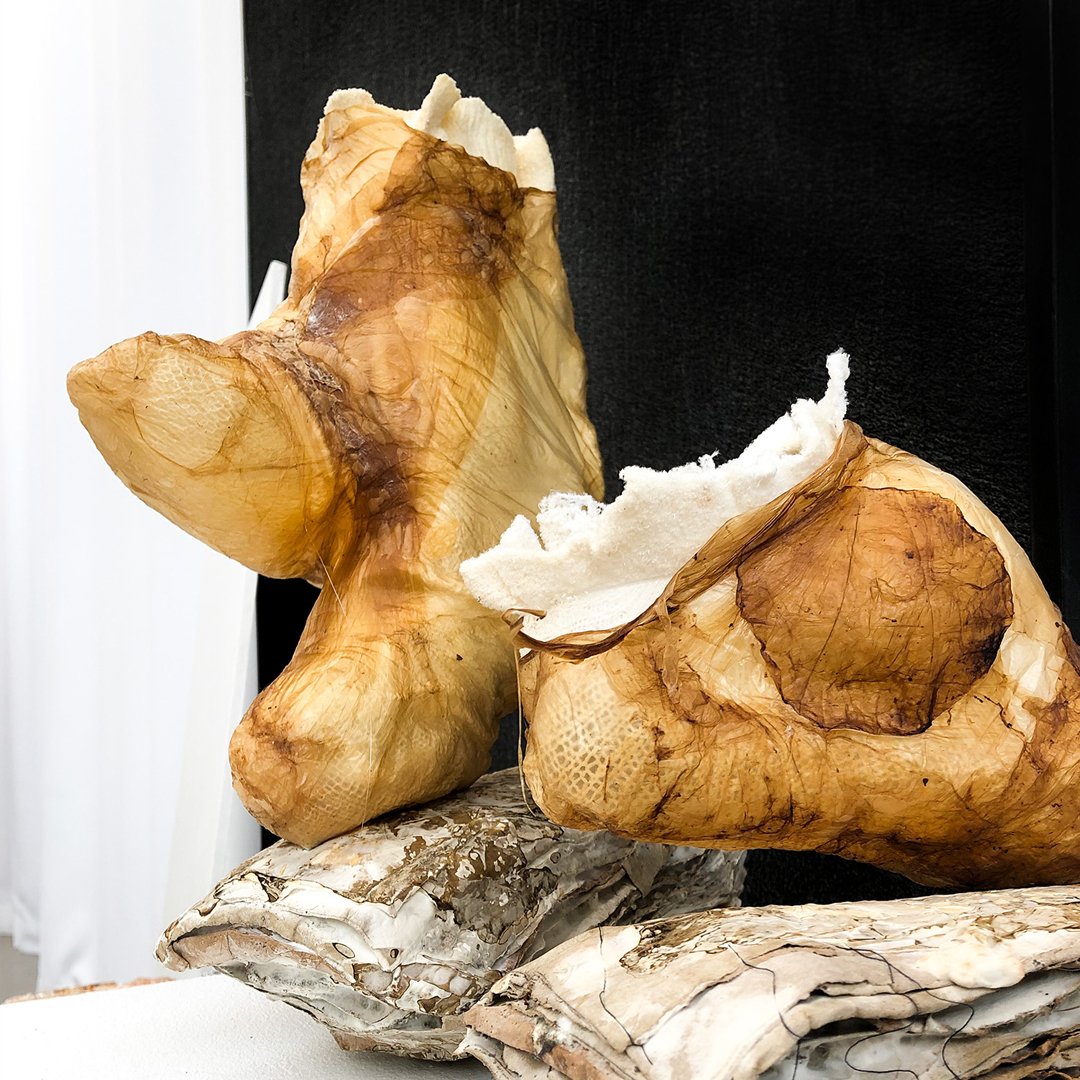
Kintsugi
Carol De Lara
Swedish School of Textiles
s2104988@student.hb.se
Carol is a bio-designer focused on the interaction within biocomposite materials as textile propositions in the context of fashion design. She obtained her bachelor’s degree in footwear design from London College of Fashion and is currently undertaking her master’s degree specialising in the interaction between bacterial cellulose, knitted structures and mycelium.
Swedish School of Textiles
s2104988@student.hb.se
Carol is a bio-designer focused on the interaction within biocomposite materials as textile propositions in the context of fashion design. She obtained her bachelor’s degree in footwear design from London College of Fashion and is currently undertaking her master’s degree specialising in the interaction between bacterial cellulose, knitted structures and mycelium.
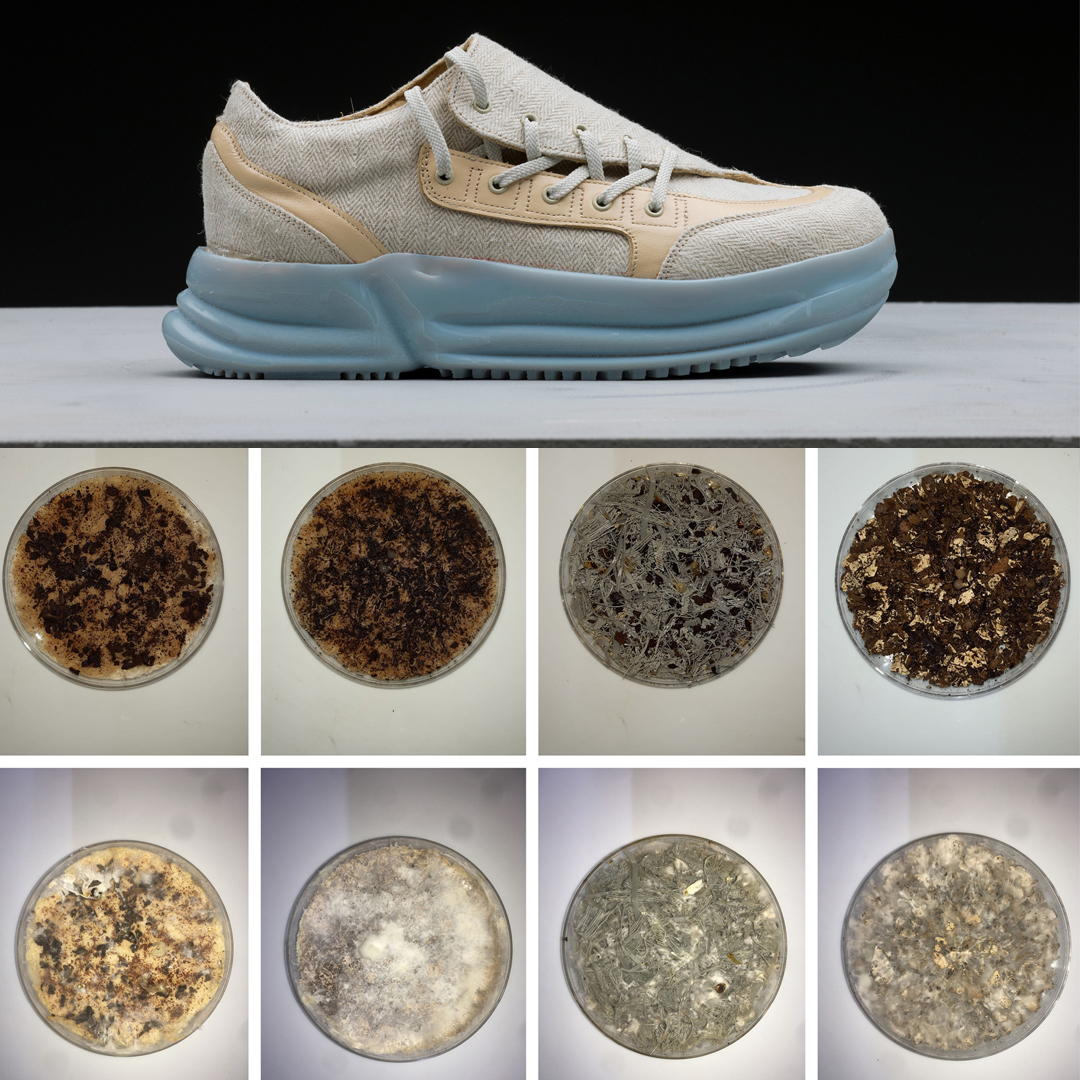
The Growing Sneakers: merging footwear design with the realm of fungi
Nicholas Rapagnani
Free University of Bozen-Bolzano
rapagnani.nicholas@gmail.com
Nicholas Rapagnani is a designer, researcher and networker focusing on the future bio-revolution of footwear, materials and manufacturing innovation, and 3D printing. He experiments at the contact zone between design and microbiology practices, bringing actual sustainable changes in products’ life cycles design through a multidisciplinary and creative approach to projects.
Free University of Bozen-Bolzano
rapagnani.nicholas@gmail.com
Nicholas Rapagnani is a designer, researcher and networker focusing on the future bio-revolution of footwear, materials and manufacturing innovation, and 3D printing. He experiments at the contact zone between design and microbiology practices, bringing actual sustainable changes in products’ life cycles design through a multidisciplinary and creative approach to projects.

More Than Human: an approach to design through time
John Mikesh
mikesh@materialaffair.studio
John Mikesh is a researcher and material programmer who recently received his degree in Master of Architecture at Princeton University. His interests interface between the digital and the physical; he explores opportunities embedded within material properties and construction technologies to design a world built for more than just humans.
mikesh@materialaffair.studio
John Mikesh is a researcher and material programmer who recently received his degree in Master of Architecture at Princeton University. His interests interface between the digital and the physical; he explores opportunities embedded within material properties and construction technologies to design a world built for more than just humans.
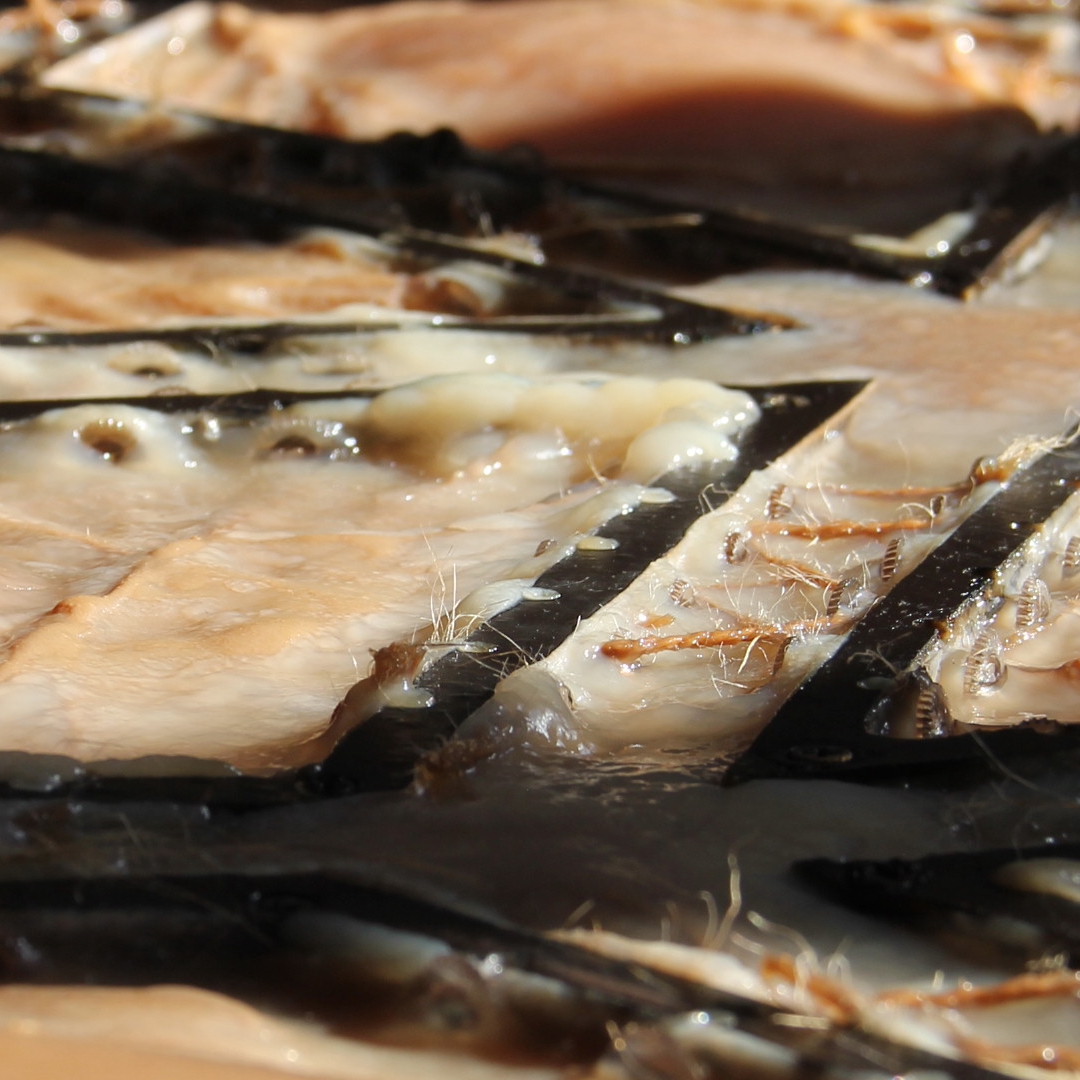
Tailored Landscape: Exploration of Design Potential of Microbial cellulose in Biofabricated Architecture
Elizaveta Veretilnaya
Institute for Advanced Architecture of Catalonia, IAAC
elizaveta.veretilnaya@students.iaac.net
Elizaveta Veretilnaya is a multidisciplinary designer and researcher working at the intersection of architecture, technology, and biology. She holds a Master’s degree in Advanced Architecture from the Institute for Advanced Architecture of Catalonia (IAAC), where she developed her thesis project focused on the potential of microbial cellulose in biofabricated design.
Institute for Advanced Architecture of Catalonia, IAAC
elizaveta.veretilnaya@students.iaac.net
Elizaveta Veretilnaya is a multidisciplinary designer and researcher working at the intersection of architecture, technology, and biology. She holds a Master’s degree in Advanced Architecture from the Institute for Advanced Architecture of Catalonia (IAAC), where she developed her thesis project focused on the potential of microbial cellulose in biofabricated design.

Life after death
Yulu Xia
RCA
10004706@network.rca.ac.uk
Yulu Xia, (born April 7, 1998, China), an interdisciplinary artist whose works are combination of biology, science, and art. Growing up in Yunnan province which is known as botanical kingdom in China, she is interested in the relationship between human and non-humans, which also further inspire her to create her works.
RCA
10004706@network.rca.ac.uk
Yulu Xia, (born April 7, 1998, China), an interdisciplinary artist whose works are combination of biology, science, and art. Growing up in Yunnan province which is known as botanical kingdom in China, she is interested in the relationship between human and non-humans, which also further inspire her to create her works.
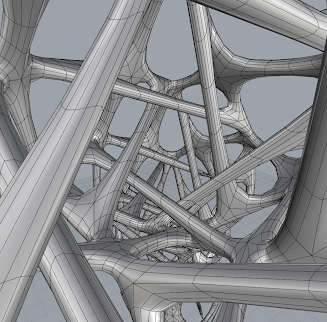
Modular Knitted Architecture
Elizabeth Gaston, Armand Agraviador, Jane Scott
Northumbria University, Newcastle University, and HBBE
Elizabeth.gaston@Newcastle.ac.uk
Bespoke Knitted branching structures have the potential to dramatically reduce the quantity of traditional bulk materials required during construction. This is because the complex geometry can reduce the materials required to achieve structural performance. In addition, branching structures have already been demonstrated as suitable for application using low impact biomaterials such as mycelium and bacterial cellulose composites.
In this research we have investigated a lexicon of branching structures at two scales using hand process. Form and complexity have been developed through computational modelling and tested in knit production on industrial knit technologies.
Northumbria University, Newcastle University, and HBBE
Elizabeth.gaston@Newcastle.ac.uk
Bespoke Knitted branching structures have the potential to dramatically reduce the quantity of traditional bulk materials required during construction. This is because the complex geometry can reduce the materials required to achieve structural performance. In addition, branching structures have already been demonstrated as suitable for application using low impact biomaterials such as mycelium and bacterial cellulose composites.
In this research we have investigated a lexicon of branching structures at two scales using hand process. Form and complexity have been developed through computational modelling and tested in knit production on industrial knit technologies.

MycoKnit CompoSITe
Romy Kaiser & Ahmet Topcu
Newcastle University, and HBBE
r.kaiser1@newcastle.ac.uk
A.Topcu2@newcastle.ac.uk
Myco-Knit CompoSITe prototype explores artistically a novel fabrication technique of building with digital tools and biology by using a 3D knitted, reinforcing fibre-based formwork for growing a chair with Mycelium, the root network of fungi. Mycelium growth binds the organic filling material together, resulting in a stiff self-supporting and light-loads carrying object when dried. This novel bio fabrication approach widens the possibilities of building complex geometries with biomaterials in the future
Newcastle University, and HBBE
r.kaiser1@newcastle.ac.uk
A.Topcu2@newcastle.ac.uk
Myco-Knit CompoSITe prototype explores artistically a novel fabrication technique of building with digital tools and biology by using a 3D knitted, reinforcing fibre-based formwork for growing a chair with Mycelium, the root network of fungi. Mycelium growth binds the organic filling material together, resulting in a stiff self-supporting and light-loads carrying object when dried. This novel bio fabrication approach widens the possibilities of building complex geometries with biomaterials in the future

I.N.S.E.C.T
Interspecies exploration by biodigital manufacturing technologies
International Summer Workshop
skeu@kglakademi.dk
The prototype is incorporated into our everyday built settings, with a focus on insect and microbial life and tests a limited amount of processes that we worked with during the workshop as the microclimate is the fundamental link between the physical planning of any habitat (geometry, spatial arrangements, material compositions) and its receptivity to living organisms. Variation of microhabitats, suitable for biodiversity, are formed primarily as a result of microclimate fluctuations.
International Summer Workshop
skeu@kglakademi.dk
The prototype is incorporated into our everyday built settings, with a focus on insect and microbial life and tests a limited amount of processes that we worked with during the workshop as the microclimate is the fundamental link between the physical planning of any habitat (geometry, spatial arrangements, material compositions) and its receptivity to living organisms. Variation of microhabitats, suitable for biodiversity, are formed primarily as a result of microclimate fluctuations.

